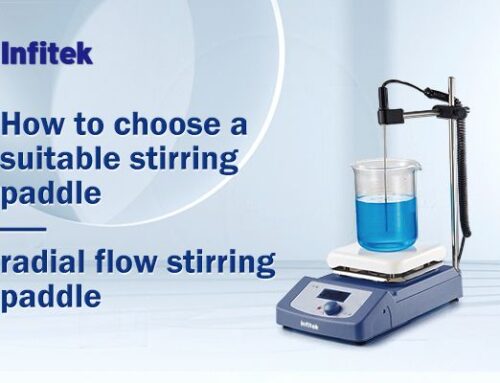How to choose the most suitable laboratory centrifuge?
Table of Contents
Centrifuge is one of the most commonly used basic equipment in laboratories. It is widely used in laboratories. It is an indispensable tool for separating serum, precipitating tangible cells, concentrating bacteria, PCR test, liquid-solid separation, and so on.
1. Rotating speed
Centrifuges are divided into low-speed centrifuges <10000rpm>30000rpm/min according to the maximum speed. Each centrifuge has a rated maximum speed. The maximum speed refers to the speed under no-load conditions, but the maximum speed depends on the type of rotor. There are differences depending on the size of the sample quality. The maximum speed is different depending on the rotor; an imported centrifuge can be equipped with multiple rotors, and a few domestic centrifuge manufacturers have successfully developed this kind of technology, which can be used for multiple purposes. The horizontal rotor can reach 15000rpm/min, but the angular rotor can reach about 14000rpm/min. For specific differences, please consult the product salesperson and the relevant technical personnel of the manufacturer in detail. Therefore, you must be cautious in the choice of speed. The maximum centrifuge you choose The speed is higher than the target speed. For example: the target speed is 16000rpm/min, the maximum speed of the selected centrifuge must be higher than 16000rpm/min.
Generally, the separation effect is mainly determined not by the rotation speed, but by the centrifugal force, so sometimes the rotation speed does not meet the requirements, as long as the centrifugal force can reach the standard, it is the same, and the experiment can achieve the effect you need.
Centrifugal force calculation formula:
RCF=11.2×R×(r/min/1000) 2R represents the centrifugal radius, r/min represents the rotation speed.
2. Temperature
Some samples, such as proteins, cells, etc., will be destroyed in a high temperature environment, so you must choose a refrigerated centrifuge, which has a rated temperature range. When the centrifuge is running at high speed, the heat generated by the centrifuge is balanced with the refrigeration system of the centrifuge at a certain temperature. Generally, samples for refrigerated centrifugation need to be kept at 3°C to 8°C. The specific amount depends on the rotor, such as the rated temperature of a centrifuge. The range is -10℃~60℃, and it can reach about 3℃ when rotating with a horizontal rotor. If it is an angle rotor, it may only reach about 7℃. In this regard, we must consult product sales personnel and relevant technical personnel of the production plant in detail.
3. Volume
How many sample tubes need to be centrifuged each time? How much capacity does each sample tube need?
These factors determine the total capacity of a centrifuge. Simply put, the total capacity of the centrifuge = the capacity of each centrifuge tube × the number of centrifuge tubes. The total capacity and the workload are matched.
4. Rotor
Centrifuge rotors are mainly divided into two types, horizontal rotors: the hanging basket is in a horizontal state during operation, at right angles to the rotating shaft, and the sample concentrates the sediment on the bottom of the centrifuge tube; angle rotor: the centrifuge container and the rotating shaft form a fixed angle, and the sample will settle Focus on the bottom of the centrifuge tube and the side wall near the bottom. If you want the separated samples to concentrate on the bottom of the centrifuge tube, choose a horizontal rotor. If you want the sample to concentrate on the bottom of the centrifuge tube and on the side wall near the bottom, choose an angular rotor.
There are also some special tests or special samples that require special rotors such as: large-capacity hanging baskets are mostly used in blood stations, microplate rotors, slide rotors, PCR rotors, test tube rack rotors and capillary rotors. The rotor has a fixed specification, which is combined with the capacity of the centrifuge, such as a 36×5ml angular rotor, which determines the type of the rotor and the capacity of the centrifuge, so the choice of the rotor is very important.
5. Control System
High-end centrifuges all use microcomputer control systems, which can not only ensure the safe operation of the centrifuge but also complete the tasks automatically. Many centrifuges now have better humanized control systems. For example: rotor identification function, safety lock function, fault prompt function, acceleration and deceleration curve and so on. Refrigerated centrifuges are also different in terms of refrigeration. The current environmentally friendly technology is of course CFC-free refrigeration. In addition, the noise problem must be considered, and try to choose a centrifuge with less noise, so as to maintain a comfortable experimental environment. Be cautious in terms of accessories. Some experiments need to use special centrifuge tubes to centrifuge toxic samples or samples that require ultra-high-speed centrifugation. Such centrifuge tubes must be equipped with corresponding tube sleeves to be safer. There are also some special sample containers, irregular sample bottles, blood bags, etc. These details and accessories must be carefully considered when choosing a centrifuge, otherwise normal work cannot be performed.




Get Social